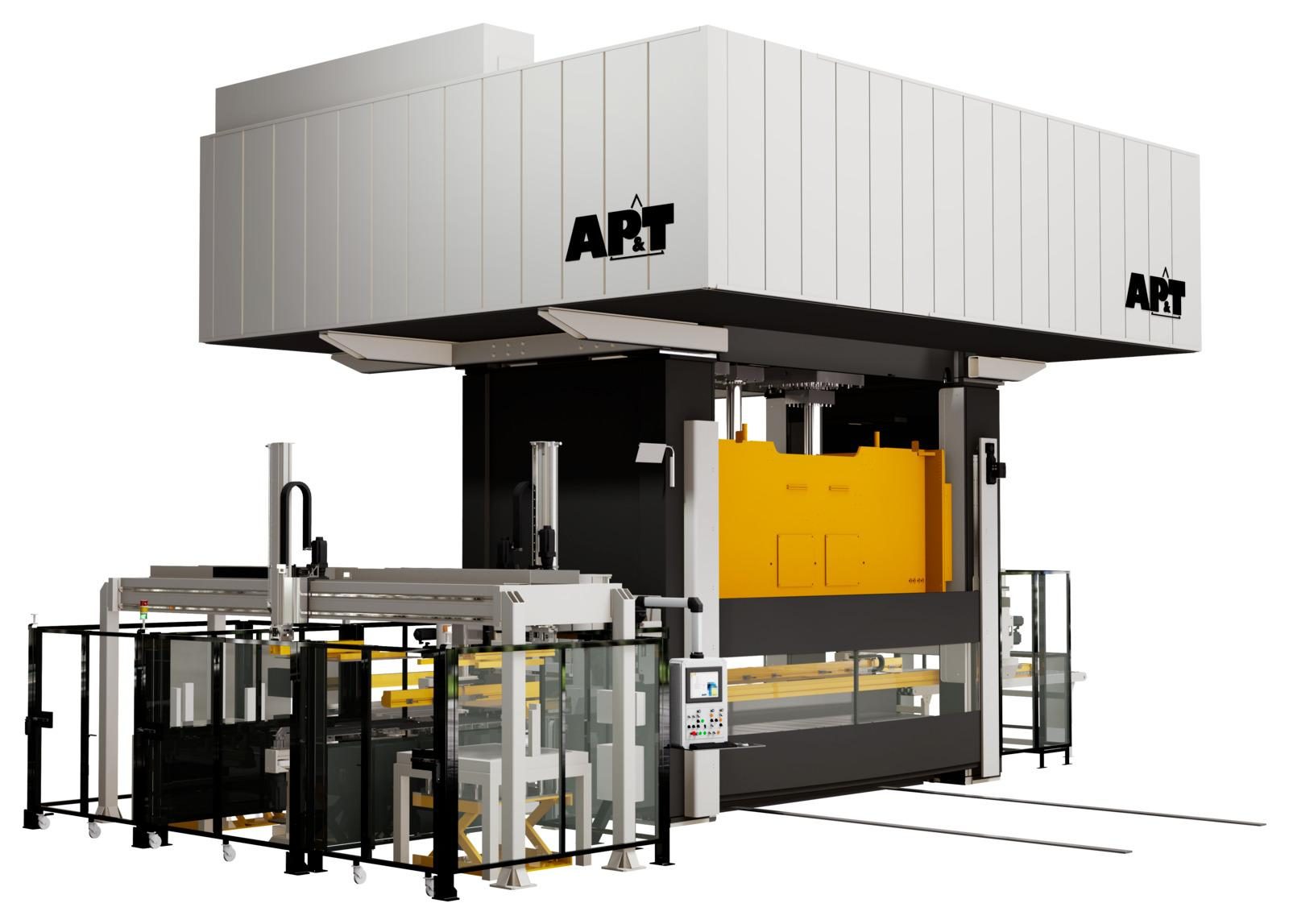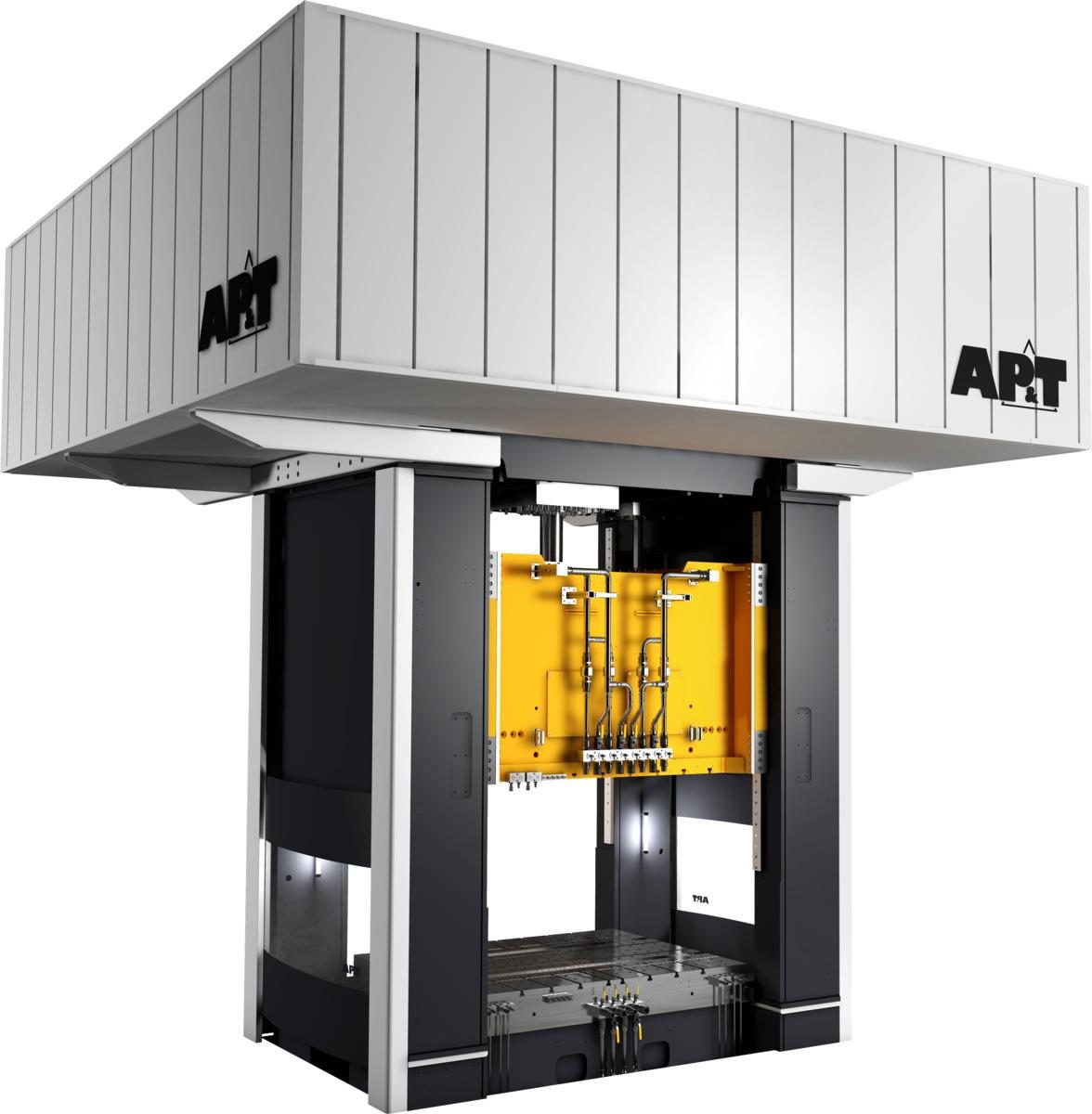Transfer applications, press hardening, hot forming of aluminum or forming of composite material... With its servohydraulic press, AP&T has developed a multifaceted, energy efficient alternative to both conventional hydraulic presses and servo mechanical presses.
“Low energy consumption, short cycle times and high precision are desirable attributes, regardless of application. This makes our solution highly interesting for many customers in various industries,” says Mikael Karlsson, product manager of Presses at AP&T.
AP&T's servohydraulic press stands out from the usual hydraulic press in a number of ways. For example, the hydraulic system’s control valves have been replaced by servo motors, which means that speed, position and press force are completely controlled electrically.
“The design has made it possible to limit the number of unique moving parts, cut down on oil volume, reduce pressure in the hydraulic system to a maximum of 250 bar and eliminate the effects of any variations in oil temperature. This lays the foundation for a very robust process with a high degree of availability and repeat accuracy, while substantially reducing the need for maintenance,” says Karlsson.
Energy efficient process. The servo motor solution has also streamlined energy consumption by between 40 and 70 percent, depending on the application. Heat loss generated by pressure valves can be avoided, and some servo motors are used as generators at retardation. The press’ cushion cylinder is also operated by servo motors which work as generators. Braking energy is distributed to the motors used for acceleration and forming through a kinetic storage system and a central direct current converter. Since the energy is stored internally in the press, it is not necessary to use electricity from the grid during peak loads. Stored energy surpluses can be restored to the grid.
High forming precision. The entire press process is monitored by a closed-loop system, which continuously controls the slide’s movements, corrects any deviations and ensures speed and position with a great deal of precision. Not least, the system actively governs the slide’s parallelism in relation to the press table — a unique integrated function that contributes to both high forming precision and less wear on tooling.
“The acceleration and retardation speed is an impressive two to three times higher than that of a conventional hydraulic press, thus enabling extremely short cycle times. To maximize production capacity, the press can be synchronized with other servo-driven units for feeding and unloading,” says Mikael Karlsson.
Alternative to servo mechanical presses. Low energy consumption, compact design, high production capacity and repeat accuracy in combination with low maintenance costs make AP&T’s servohydraulic press a competitive alternative in several areas that have traditionally used servo mechanical presses, such as in transfer solutions and the first presses in tandem lines.
AP&T’s servohydraulic press — examples of applications
Transfer solutions: High stroke frequency (SPM) compensates off-center loads and offers full synchronization.
Deep drawing and other cold forming: High degree of control accuracy, pre-acceleration of cushion, pulsating forming and major energy savings.
Forming of high-strength steel (AHSS): All forming in one step, reduced spring back, high forming forces on a small tooling area, five to six times greater forming power than a conventional hydraulic press.
Hot forming of aluminum: Minimal energy consumption at long holding times and high force, short cycle time, high forming speed.
Press hardening: Minimal energy consumption at long holding times and high force, short cycle time, high forming speed.
Lead press in tandem lines: Short cycle time for the entire line, full synchronization, flexible power/stroke length through the entire press cycle.
Forming of composites and similar materials: Minimal energy consumption at long holding times and high force, ensured parallelism and flexible force patterns of the tool.


